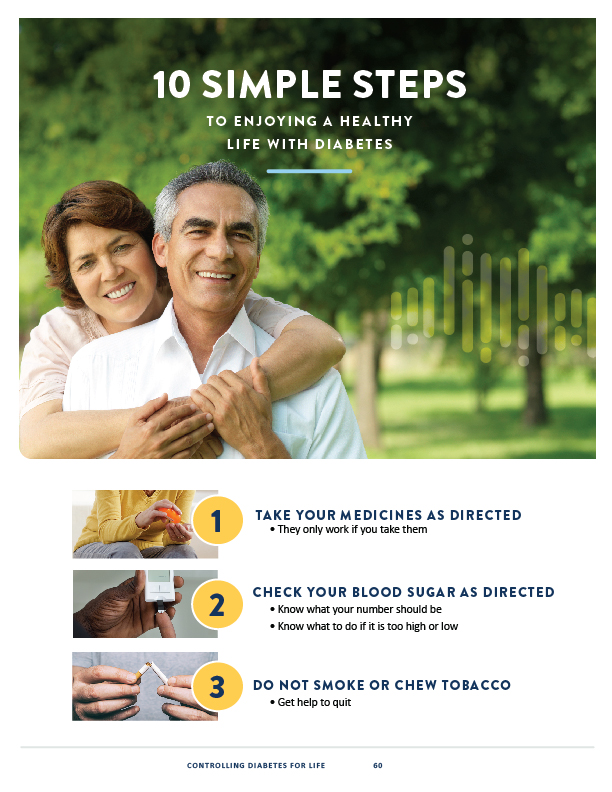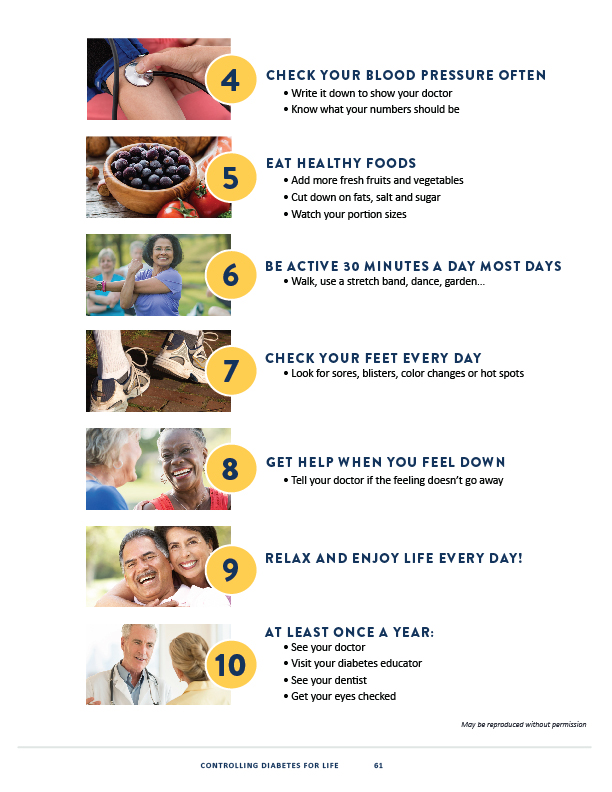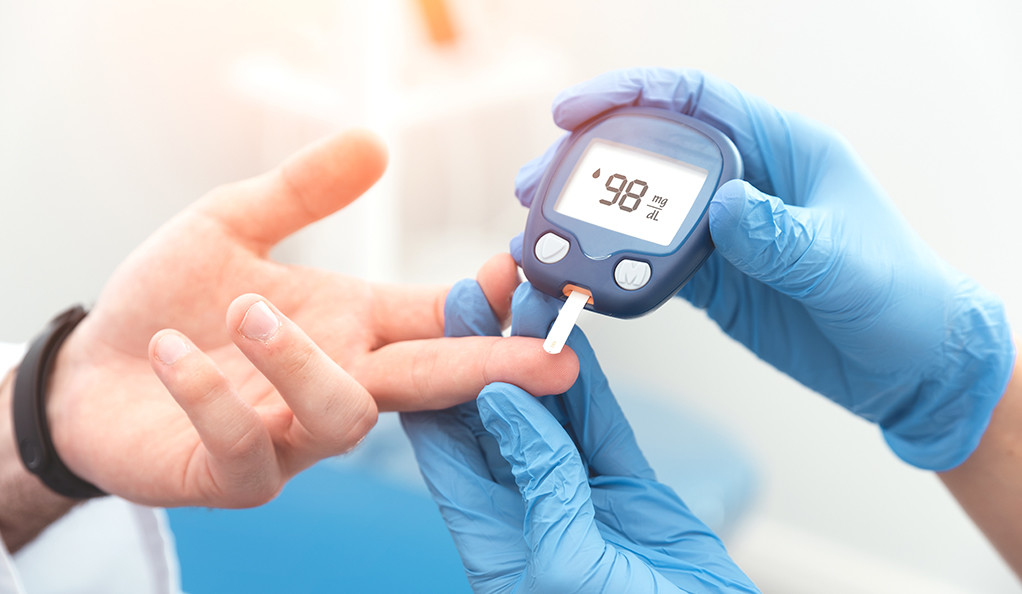Living well with diabetes doesn’t require perfection—it takes small, steady habits that support your body, mind, and daily routine. Below are ten practical steps you can start today. They come from a simple, trusted checklist used in diabetes self-management programs and adapted here with extra tips you can apply at home. 10simplesteps
1) Take your medicines as directed
Medicines only work if you take them consistently. Set phone reminders, use a pill organizer, and keep a simple log (time taken, any side effects). If something feels off—call your clinician before changing doses on your own. Bring your log to appointments so your care team can adjust safely. 10simplesteps
2) Check your blood sugar as directed
Know when and how often to check (for example, fasting, before meals, or at bedtime, per your care plan) and what your target range should be. Keep notes on readings, meals, activity, and how you felt—patterns help you and your clinician fine-tune your plan. If numbers run too high or low, follow your agreed action steps. 10simplesteps
3) Don’t smoke or chew tobacco
Quitting is one of the most powerful things you can do for your heart, kidneys, eyes, and nerves. Combine methods: a quit date, nicotine replacement or medications (if appropriate), and support (text programs, apps, a buddy). Every tobacco-free day improves circulation and blood-sugar control. 10simplesteps
4) Check your blood pressure often
High blood pressure often has no symptoms—but it raises risks. Use a home cuff (upper-arm style is best), sit quietly for 5 minutes, feet flat, arm at heart level. Record your readings with the date and time to share with your doctor and learn your personal goals. 10simplesteps
5) Eat healthy foods (and watch portions)
Aim for a “balanced plate”: half non-starchy veggies, one quarter lean protein, one quarter whole grains or starchy foods. Add more fresh fruits and vegetables; cut down on fats, salt, and added sugar. Use smaller plates, measure portions a few times to “train your eye,” and drink water first. 10simplesteps
Easy swaps
- Soda → sparkling water with lemon
- White rice → brown rice or quinoa (smaller serving)
- Fried foods → baked, air-fried, or grilled
- Dessert daily → fruit most days; sweet treats on planned occasions
6) Be active 30 minutes a day, most days
Movement helps your body use insulin better. Walking, dancing, gardening, resistance bands—pick what you enjoy. Break it up: three 10-minute sessions still count. Add light strength work 2–3 days/week (chair squats, wall push-ups) to protect muscles and joints. 10simplesteps
7) Check your feet every day
After bathing or before bed, look for sores, blisters, color changes, swelling, or “hot spots.” Use a mirror or ask a family member if it’s hard to see. Keep feet clean and dry, moisturize (not between toes), trim nails straight across, and wear well-fitting shoes with socks. Report problems early—small issues can worsen quickly. 10simplesteps
8) Get help when you feel down
Diabetes can feel heavy. If sadness, worry, or stress won’t lift, tell your clinician. Brief counseling, peer groups, faith or community support, and simple daily routines (fresh air, music, mindfulness, prayer) can restore energy and motivation to stay on track. 10simplesteps
9) Relax and enjoy life every day
Make space for pleasure and recovery—10 minutes of breathing, stretching, reading, or a call with a friend. Protect your sleep routine (consistent times, dark cool room). Joy and rest lower stress hormones that can push blood sugar higher. 10simplesteps
10) Do your annual health visits
At least once a year, schedule your doctor visit, diabetes educator check-in, dental exam, and a dilated eye exam. These visits catch small problems early and refresh your self-care plan. Bring your logs (blood sugar, blood pressure, meds, foot checks) and your questions. 10simplesteps


A simple weekly starter plan
- Sun: Set up your pillbox and grocery list (veggies, lean protein, whole grains).
- Mon–Fri: 10-minute walk after two meals each day; quick foot check at night.
- Wed: Home BP and blood-sugar log review—note any patterns.
- Sat: Prep 2–3 balanced lunches; schedule next month’s appointments.
When to call your care team
- Blood sugar is repeatedly outside your target range.
- You notice new foot wounds, increasing swelling, or numbness.
- Persistent low mood, sleep problems, or rising stress.
- Medication side effects (dizziness, digestive issues, rashes).
Final thoughts
You don’t have to change everything at once. Choose one step, make it a habit, then add the next. Small wins, stacked week after week, add up to more energy, better numbers, and a fuller life.
If you’d like help building a personalized routine or connecting with local resources, Clare Senior Care can walk with you—one step at a time.
Disclaimer: This article is for general education and is not a substitute for medical advice. Always follow the plan you make with your clinician and seek emergency care for urgent symptoms.
- Carrying on a Legacy of Love: The “Bread Run” with Sister Joyce and The Crew
- Stop the Bite: Bedbug Detection, Prevention, and Treatment
- Common Warning Signs of Mental Health: A Guide for Families and Caregivers
- Spotting the Signs: Recognizing Severe Reactions and Mental Health Needs in Disaster Survivors
- Mindful Awareness vs. Autopilot: Reclaiming the Moments That Matter Most


